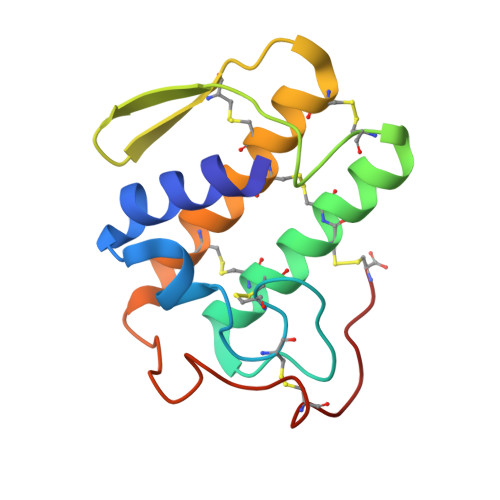Structures of free and inhibited human secretory phospholipase A2 from inflammatory exudate.
Scott, D.L., White, S.P., Browning, J.L., Rosa, J.J., Gelb, M.H., Sigler, P.B.(1991) Science 254: 1007-1010
- PubMed: 1948070
- DOI: https://doi.org/10.1126/science.1948070
- Primary Citation of Related Structures:
1POD, 1POE - PubMed Abstract:
Phospholipase A2 (PLA2) participates in a wide range of cellular processes including inflammation and transmembrane signaling. A human nonpancreatic secretory PLA2 (hnps-PLA2) has been identified that is found in high concentrations in the synovial fluid of patients with rheumatoid arthritis and in the plasma of patients with septic shock. This enzyme is secreted from certain cell types in response to the proinflammatory cytokines, tumor necrosis factor or interleukin-1. The crystal structures of the calcium-bound form of this enzyme have been determined at physiological pH both in the presence [2.1 angstrom (A) resolution] and absence (2.2 A resolution) of a transition-state analogue. Although the critical features that suggest the chemistry of catalysis are identical to those inferred from the crystal structures of other extracellular PLA2s, the shape of the hydrophobic channel of hnps-PLA2 is uniquely modulated by substrate binding.
Organizational Affiliation:
Department of Molecular Biophysics and Biochemistry, Yale University, New Haven, CT 06511.



















